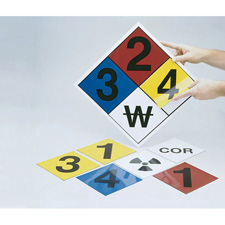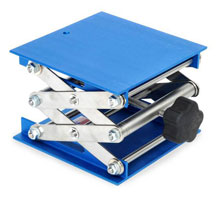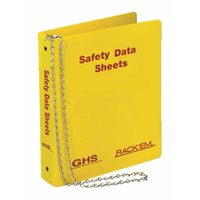| The Home page of ILPI's Safety Data Sheet (SDS) Resource, the leader in SDS information since 1995! | |
| The history and philosophy behind this resource. | |
| A curated collection of books and reference materials concerning Safety Data Sheets and closely related topics. | |
| Paste your plain text SDS into the SDS-Demystifier, and it will be converted into a hypertext-enriched document with links to detailed explanations of each key term. | |
| An extensive list of frequently asked questions about Safety Data Sheets including regulations, content, compliance, and more. | |
| A humorous take on Safety Data Sheet jargon. Fill in the blanks on our entry form to generate a personalized Unsafety Data Sheet to share with your coworkers. | |
| Since 1995, we've maintained this massive curated list of the best places to find Safety Data Sheets on the Internet. | |
| Way more than a glossary, this hypertext-enhanced resource covers hundreds of SDS-related terms and expert knowledge. Each entry includes both the SDS relevance and links to additional authoritative resources. | |
| Archived results of Safety Data Sheet related polls taken by some of our millions of site visitors | |
| You are here! The OSHA regulations behind SDS regulations, including the inspection guidelines and over 400 official interpretations letters under the Hazard Communication Standard | |
| Commercial suppliers of SDS authoring and management software as well as cloud compliance services. | |
| Commercial companies that will create SDS's for your specific needs as well as SDS translation companies. |

Safety signs, banners, and scoreboards? Get yours at Safety Emporium!
| Title: 09/20/2013 - Labels on ampoules 5 mL or smaller | |
| Record Type: Interpretation | Standard Number: 1910.1200(f)(1) |
September 20, 2013
Ms. Karen Bruntrager
Mr. Carlos Celestino
United States Pharmacopeial Convention
12601 Twinbrook Parkway
Rockville, MD 20852
Dear Ms. Bruntrager and Mr. Celestino:
Thank you for your February 18, 2013, letter to the Occupational Health and Safety Administration's (OSHA) Philadelphia Regional Office. Your letter was forwarded to the Directorate of Enforcement Programs to be answered. We apologize for the delay in responding to your inquiry. Your question concerns the labeling requirements under the revised Hazard Communication standard (HCS 2012), 29 CFR 1910.1200. This letter constitutes OSHA's interpretation only of the requirements herein, and may not be applicable to any questions not delineated within your original correspondence. Your paraphrased question and our response is below.

NFPA signs and kits are available at Safety Emporium.
Background: The United States Pharmacopeial Convention (USP), a distributor, provides reference standards for various purposes. The standards are usually sold in small containers (5 milliliter (mL) vials, 2 or 5 mL ampules). USP has more than 3,000 chemicals available for sale as reference standards vials. Due to the small size of the containers, fitting all label elements on the label requires using a very small font size, which renders the hazard information illegible. Additionally, USP believes it will be cost prohibitive to comply with the new labeling requirements through the use of pull-out labels, fold-back labels, tags or other methods.
Question: USP would like to include only the signal word, hazard statement(s), and pictogram(s) on the label so that the label is easier to read. USP would also include an instruction to refer to the safety data sheet (SDS) prior to use, and provide USP's website address where the SDS can be accessed. Is this acceptable to OSHA?
Response: No. Paragraph (f)(1) of the HCS requires the chemical manufacturer, importer, or distributor to ensure that each container of hazardous chemicals leaving the workplace is labeled, tagged or marked with the following information: (1) a product identifier; (2) signal word; (3) hazard statement(s); (4) pictogram(s); (5) precautionary statement(s); and (6) the name, address, and telephone number of the responsible party. Although OSHA understands your concern that it may be difficult to include all of the HCS 2012 label elements on small shipped containers, the accommodation you suggest does not comply with OSHA's HCS 2012 labeling requirements.
Chemical users must be able to read labels without the use of any device, with the exception of corrective lenses for the employees whose vision requires corrective lenses. Some of the example labels that you provided are illegible due to the small font size and therefore do not meet the requirements of the HCS. Tags, pull-out labels, or fold-back labels may be an appropriate way for you to label small containers so that the label elements are legible. When tags are used, they must be affixed to the immediate container of the hazardous chemical in such a way that they do not become separated from the container.
As OSHA explained in a June 4, 2013, letter of interpretation, OSHA has developed a practical accommodation to address situations where the manufacturer can show that it is not feasible to use pull-out labels, fold-back labels, or tags containing the full HCS 2012 required information for shipped small containers (i.e., the actual container holding the hazardous chemical). The June 4, 2013, letter is enclosed for your reference. This practical accommodation requires the manufacturer to include, at a minimum, the following information on the label of the immediate container:
- Product identifier
- Appropriate pictograms
- Manufacturer's name and phone number
- Signal word
- A statement indicating the full label information for the chemical is provided on the outside package.
Additionally, the outside packaging, at a minimum, must comply with the following:
- All the applicable label elements, as defined in 29 CFR 1910.1200(f)(1).
- The outside package must be clearly marked to ensure the complete label elements are visible and it must clearly inform users that the small container must be stored in the outer container bearing the complete label. The complete label must be maintained on the outer package (e.g., not torn, defaced, destroyed).
- The manufacturer must ensure that any alternative labeling used does not conflict with any other standards. As such, the outside packaging must not present a hazard while the material is being stored.
The outside packaging is the container (e.g., bag, box) that the immediate product container is placed into, which may or may not be the exterior shipping container.

Safety Emporium carries all kinds of laboratory stands and supports such as this handy scissors jack.
Example: Category 1 flammable liquid, named High Flam, where the only hazard is the flammability, manufactured by ABC.
- The immediate container must contain:
- High Flam, (product identifier),
- Flame Pictogram, (pictogram),
- DANGER, (signal word),
- ABC, (manufacturer name),
- (123) 456-7890, (phone number),
- Full labeling information for High Flam is provided on the outside package.
- The outside package must contain:
- High Flam,
- Flame Pictogram,
- DANGER,
- Extremely flammable liquid and vapor, all the precautionary statements (e.g., Store in a well-ventilated place. Keep cool. Keep container tightly closed) see Appendix C, subsection C.4.19 for the full list of precautionary statements that must be present for a category 1 flammable liquid.
- ABC 100 Any Street, Any Town, MA 14569
- Phone # (123) 456-7890.
- NOTE: As this is a flammable liquid, the outer packaging MUST not be of a material that is flammable or combustible, 29 CFR 1910.106(d)(2)(i).
While you state that it may be cost prohibitive for USP to comply with the HCS 2012 labeling requirements, all provisions of the final standard were deemed economically feasible prior to the promulgation of these requirements. Based on the information provided in your letter, USP is required to include all labeling information on the small vials you produce.

Get your SDS binders, centers and more from Safety Emporium.
The small container accommodation you propose is not acceptable because the label does not include the product identifier, precautionary statements, and the manufacturer's name and phone number. Additionally, referring chemical users to SDSs to obtain the missing labeling elements is not acceptable. Labels are intended to serve as an immediate visual notation of key hazard information, and requiring users to refer to the SDS to obtain hazard information undermines this purpose.
Finally, the December 1, 2015, deadline only applies to distributors. Under 29 CFR 1910.1200(c), a distributor is defined as any business, other than a chemical manufacturer or importer, which supplies hazardous chemicals to other distributors or to employers.
In contrast, businesses that "produce" chemicals (i.e., manufacture, process, formulate, blend, extract, generate, emit, or repackage chemicals for use or distribution) are considered "chemical manufacturers" under the HCS 2012, and must comply with the HCS 2012 labeling requirements by June 1, 2015. Although your background information describes USP as a distributor, because it repackages chemicals into reference standards vials, USP is a manufacturer under the HCS. USP must therefore comply with all the HCS 2012 labeling requirements by June 1, 2015, and the company must be listed as the chemical manufacturer on the SDS.
Thank you for your interest in occupational safety and health. We hope you find this information helpful. OSHA's requirements are set by statute, standards, and regulations. Our letters of interpretation do not create new or additional requirements but rather explain these requirements and how they apply to particular circumstances. This letter constitutes OSHA's interpretation of the requirements discussed. From time to time, letters are affected when the
Agency updates a standard, a legal decision impacts a standard, or changes in technology affect the interpretation. To assure that you are using the correct information and guidance, please consult OSHA's website at https://www.osha.gov. If you have further questions, please feel free to contact the Office of Health Enforcement at (202) 693-2190.
Sincerely,
Thomas Galassi, Director
Directorate of Enforcement Programs
Enclosure
The original official public domain version of this document is available from OSHA at https://www.osha.gov/laws-regs/standardinterpretations/2013-09-20.